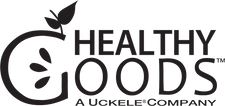Most people know meat, poultry, and fish are excellent sources of protein. If you’re considering no longer eating meat and possibly dairy products, you might worry you won’t get enough protein in a typical vegetarian meal.
But there’s no need to be concerned, explains Andrea N. Giancoli, MPH, RD, a nutritionist in Los Angeles and a spokesperson for the American Dietetic Association. “Luckily for vegetarians,” Giancoli says, “protein is very easy to obtain with a balanced diet and good food choices.”
Proteins are made up of compounds known as amino acids, Giancoli explains. Nine of these amino acids are considered essential. Animal foods contain all nine, which is why they are called complete proteins and are the traditional — and easy to get — protein source. Most plant foods are lacking in one or more of the essential amino acids, which is why they’re called incomplete proteins, she says.
Some dairy foods are complete proteins — eggs, milk, yogurt, and cheese. However, vegans and some vegetarians won’t eat dairy products because they come from animals. If you don’t eat dairy, you’ll need to get your protein from plant sources. “In the plant world, soy is considered a complete protein,” says Giancoli. “That’s why you hear about vegetarians eating a lot of soy products — tofu, edamame, soy milk, and others.”
If you’re allergic to soy or just don’t like the taste, you still have other options for making a healthy vegetarian meal. Most plant foods, including grains, nuts, and legumes (beans), contain some amount of essential amino acids. But because they are not complete, you should pair certain foods together to cover your bases and get all of the essential amino acids you need in one vegetarian dish.
“For example, grains such as rice typically lack the essential amino acids isoleucine and lysine, but contain methionine and tryptophan,” Giancoli says. “Beans contain isoleucine and lysine, but lack methionine and tryptophan. Therefore, together, they make a complete protein. This is also referred to as complementary proteins. Even better, they don’t have to be eaten at the same time.”
Classic vegetarian meal pairings that do add up to complete proteins are red beans and rice, corn tortillas and pinto beans, couscous and lentils, and hummus and whole wheat pita, recommends Giancoli.
Other plant foods that are high in protein and considered nearly complete proteins are hemp and the grain quinoa. Nuts and nut butters, such as from peanuts or almonds, are also excellent sources of protein.
Here’s how much protein you can get from other sources compared to meat:
- 3 ounces of meat (about the size of a regular deck of cards): approximately 21 to 26 grams protein
- 1 egg: 6 to 7 grams protein
- 1 cup milk: 7 to 8 grams
- 1 cup soy milk: 7 grams
- 1 cup firm tofu: 20 grams
- 1 cup brown rice: 4.5 grams
- 1 cup quinoa: 8 grams
- 1 cup kidney beans: 15 grams
- 1 ounce roasted almonds: 6 grams
Most vegetables and whole grains contain at least 1 gram of protein per serving.
Article courtesy of EverydayLiving.com, found here.

